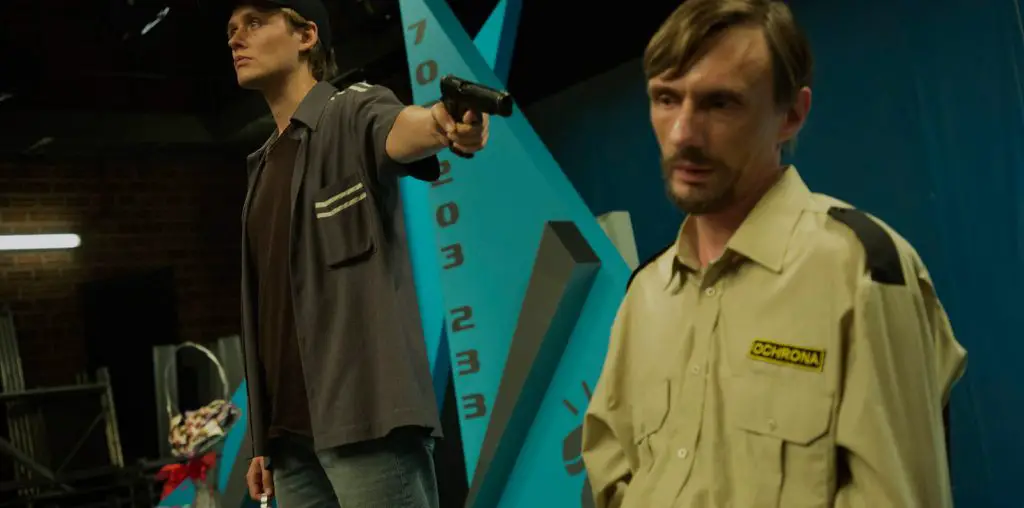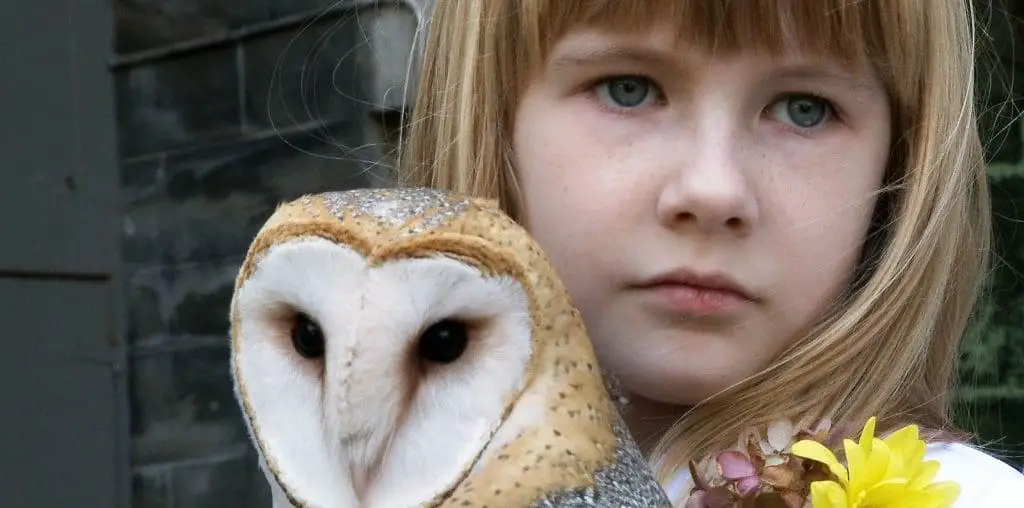
Canadian Classicks #7: Ginger Snaps (2000)
Director: John Fawcett
Writer: Karen Walton
Starring: Emily Perkins, Katherine Isabelle, Kris Lemche, Mimi Rogers, Jesse Moss, Danielle Hampton
When most people think of Canada, the first thing to come to mind is likely some sort of rugged wilderness scene (snow optional) with thick forests, high mountains, cool springs, etc. But for many native Canadians, our day-to-day existence, and our childhoods in particular, were colored by a much different environment. One that is also very familiar to most Americans within a certain geography and income bracket: the suburban sprawl.
The suburbs are an area that has been covered extensively in film, many 80’s teen offerings in particular, but few films have exploited the innate horror of the suburbs and the abject banality they represent quite like Canadian werewolf flick, “Ginger Snaps.” Telling the story of two outcast sisters, Brigitte (Emily Perkins) and Ginger Fitzgerald (Katherine Isabelle), the film also manages to explore themes of burgeoning female sexuality in an intelligent and clever way and features not one, not two, but three fascinating and capable female characters.
Writer Karen Walton had been approached by her friend and fellow Canadian Film Center grad, John Fawcett, in the mid 90’s about writing a horror film for him to direct. She was initially very reluctant, not being a horror fan herself and generally not finding the genre clichés appealing, but she decided to give it a go. The two of them spent the next four years working on the script and trying to nail down financing. This proved rather difficult, since Canadian filmmaking is still largely government funded and funding for genre films usually only materializes if you have had international success.
Eventually they approached producer Steve Hoban, who had produced Fawcett’s short film “Half Nelson” and the vampire comedy “Blood & Donuts,” and he agreed to put up the money. Deals were made with Motion International for Canadian financing and distribution, while Trimark would handle distribution in the US. However, this only accounted for about 60% of the less than $5M (CDN) budget and negotiations with Trimark had dragged on to the point where they could no longer meet that year’s deadline for government funding through Telefilm. They opted to postpone production for a year to hold out for Telefilm money, but that turned out to be too long for Trimark, who withdrew from the project.
In 1999, Lionsgate films, the new savior of Canadian genre flicks, stepped in with the rest of the cash and shooting commenced in October of that year. But, in an unforeseen turn, 1999 also saw a rash of high school shootings including the infamous Columbine massacre and the W.R. Myers High School shooting in Alberta, Canada. Amid panic over teen violence, public outrage at the idea of government money being used to fund what the Toronto Star newspaper dismissively called a “teen slasher movie” made finding a high school that would let the production onto their property extremely difficult. But not impossible.
The film was cast mostly with unknown Canadian teens, including Isabelle and Perkins, both from Vancouver. Actually, unbeknownst to the director at the time of casting, Isabelle and Perkins actually knew each other and had been born at the same hospital, gone to the same elementary school and had the same agent. While not necessarily best friends like the fictional Fitzgerald sisters, this familiarity does seem to have helped their performances. The closeness they portray gives the film an emotional core typically absent in teen horror comedies.
The other stand-out is the one recognizable name in the cast, American actress Mimi Rogers, who shows impressive comedic talent in a hilarious turn as Brigitte and Ginger’s mother, Pamela. Although essentially a caricature of what the sisters fear becoming, the character of Pam is also allowed some emotional growth as she slowly learns how deep her daughters are in trouble, despite never knowing the full story. Her scene near the end of the film, in which she confronts Brigitte, is touching and real and again anchors the film emotionally against all the supernatural horror elements.
The film opens with a darkly funny montage of the Fitzgerald sisters, social outcasts who made a blood oath to get “out by sixteen or dead in the scene,” staging their own deaths for s***s and giggles. While not exactly “goths,” the sisters are certainly macabre and weird enough that their social circle consists of the two of them exclusively. Another oddness the sisters share is that despite Brigitte being 15 and Ginger 16, neither girl has had their period.
But, as fate would have it, Brigitte’s period manages to trigger an attack by some sort of wild beast, which is later hit by a truck by local drug dealer Sam (Kris Lemche). The girls promise to keep the attack secret, but shortly thereafter, Ginger starts to change, becoming more sexual and distancing herself from Brigitte. Initially believing that her sister’s new attitude is the result of puberty finally kicking in, Brigitte starts to become increasingly suspicious when Ginger’s wounds start sprouting hair.
Fearing for her sister, Brigitte turns to Sam, who for a pot dealing groundskeeper seems to know a lot about werewolves. After Ginger has unprotected sex with the dopey Jason (Jesse Moss) and kills the neighbor’s dog, she turns back to Brigitte, but becomes increasingly jealous of Brigitte’s confidence in Sam. Things come to a head when a confrontation with the two sisters leads to the accidental death of popular girl Trina (Danielle Hampton), with Brigitte being forced to become the dominant personality as Ginger’s behavior is now truly dangerous, as opposed to merely unpredictable.
Filled with sassy dialogue, very dark humor, and not a drop of CG, “Ginger Snaps” is that rare beast that somehow manages to balance humor, horror, and coming of age in a way that is alternately scary and touching. And speaking of beasts, storyboards and creature designs were actually contributed by another CFC grad and friend of Fawcett’s: “Cube” director, Vincenzo Natali.
While horror films had certainly fallen out of favor in Canada after the 1980’s, the arrival of a new and intelligent take on an established horror subgenre (werewolves) had many Canadian genre fans wondering if we had a full on resurgence on our hands. The film was released to surprisingly favorable reviews and took in a respectable $425,753 CDN at the box office in Canada. The film went on to become something of a cult hit on DVD, prompting two back-to-back sequels produced in 2003, one with a limited theatrical release and even less success and the other one straight to DVD.
Not surprisingly, the praise heaped on the film by genre-starved Canucks has also prompted something of a backlash with a few horror hounds complaining that the dialogue is too hip and the metaphors too obvious. But “Ginger Snaps” proves to be the best Canadian horror film released in a very long time. It’s smarter and more touching than most of the postmodern teen horror films that flooded theaters in the late ’90’s in the wake of “Scream,” not to mention still being fresher and scarier than the current crop of pathetic and cynical remakes crowding the multiplexes. And while it didn’t quite spark the resurgence many had hoped for, a mini-franchise and a new watermark are still nothing to sneeze at.
Next week – Teen Bitch Part II, Ginger Snaps 2: Unleashed & Ginger Snaps Back.
In the 70’s and 80’s, the Canadian government introduced new tax laws in an effort to boost domestic film production, which at that point was virtually non existent. The results were, sadly, not exactly what the politicos had intended, but instead a steady stream of cheap and often tawdry exploitation pics came rushing forth from “Hollywood North”. Canadian Classicks is a look at some of the gems and turds from the so called “tax shelter period”, as well as a place to celebrate (or shame) contemporary contributors to the Canadian exploitation legacy.

